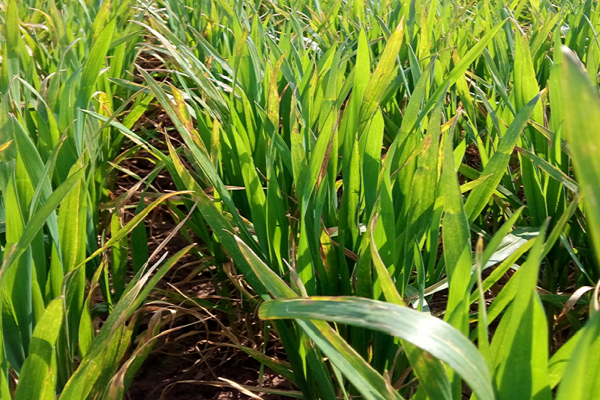Aphids and Barley Yellow Dwarf Virus on Autumn Sown Cereals
21 August 2020Barley yellow dwarf virus (BYDV) has been seen in several winter and spring cereals this season
Aphids can be seen on crops and volunteers. There is a risk of cereal aphids picking up BYDV from infected plants and spreading the virus to cereals as they emerge this autumn.
The loss of the neonicotinoid seed treatments has significantly impacted the management of BYDV in cereals. As a result, there is a reliance on the use of pyrethroid insecticides for the management of aphids and the transmission of BYDV into cereals. Currently there are no other insecticide options available. Grain aphids in Scotland have demonstrated resistance to the pyrethroid aphicides. Consequently, reliance on a pyrethroid aphicide spray is a risk as grain aphids may not be adequately controlled, increasing the risk of BYDV.
The most effective way of managing the ‘green-bridge’ of aphids on volunteers and stubble is to kill off any aphid host plants before sowing. Ideally stubble from the previous crop should be desiccated with a herbicide, ploughed in 7-10 days later and left for another 2 weeks before sowing the next crop. This will ensure that any aphid host plants will be dead and any aphids on them will have starved to death buried in the soil. Alternatively, stubble can be ploughed in and sowing delayed for 4 weeks to allow enough time for plants to die along with the aphids.
Both of these approaches will reduce the threat from walking aphids by killing off their host plants that could keep the aphids (and BYDV) ticking over. Aphids are however quite resilient and can work their way up to the soil surface after ploughing, so killing off the plants is essential so that they won’t have anything to feed on underground. However, for aphids flying into the crop after crop emergence, aphicide sprays are the only option.
A combined approach of tackling the ‘green-bridge’ for the walking aphids and using an aphicide to target the flying aphids is the approach recommended this autumn to reduce the risk of BYDV.
Because of the resistance issue in the grain aphid, it is advised to avoid the use of pyrethroid aphicides on cereals for BYDV unless absolutely necessary – when aphid colonies can be found on the leaves in the autumn. Individual aphids on leaves are not a risk until they begin to multiply up to colonies.
Sign up to the FAS newsletter
Receive updates on news, events and publications from Scotland’s Farm Advisory Service

